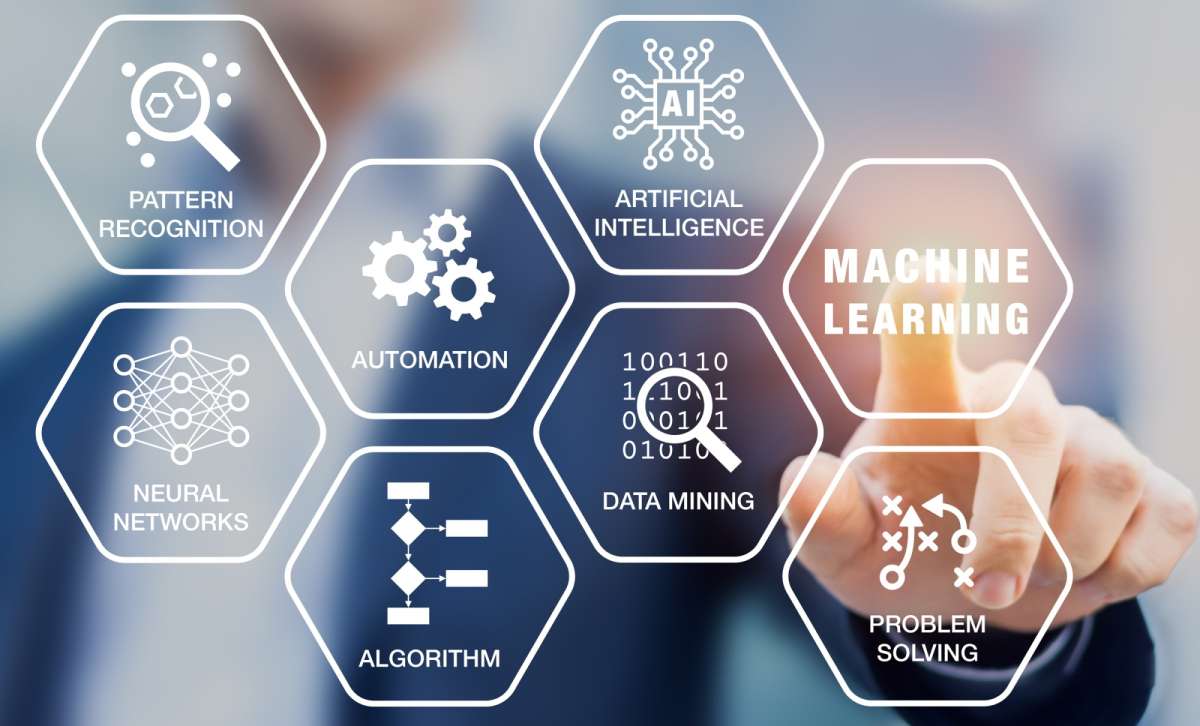
The technologies that are coming out now, artificial intelligence, bitcoin, blockchain, smart contracts, they have the potential to transform the biggest industries in the world… They all have the potential to be completely transformed now that there is artificial intelligence which actually can, in some cases, make better decisions than the human—Tim Draper, billionaire venture capitalist
Incorporating AI and machine learning into revenue cycle practices can lead to drastic improvements in business outcomes. This article will cover a variety of ways that AI and machine learning can have a strong impact on future revenue cycle decisions, including:
- Personalized patient engagement, segmentation for payment plans, financing, charity, digital touch points, and communication strategies
- Reduced staff workload, re-allocation of resources to higher value tasks
- Increased consumer experience
- Increased Customer Lifetime Value and retention
- Increased accuracy, forecastability and scale of revenue models
- Improved budget allocation
- Increased mobile and digital adoption coupled with increased features and functionality
- Better, faster scalability of services
What is Machine Learning and how is it used?
Machine Learning and artificial intelligence provide a method for analyzing large sets of data that supports the building of predictive models. These models are based on complex algorithms that draw on statistical techniques and data to continuously learn, iterate, and improve.
Machine learning helps health systems tackle challenges that they previously weren’t able to solve, due to overwhelming complexity.
However, most of the research into machine learning has focused on its impact on clinical care. On the clinical side, machine learning and artificial intelligence models impact the development and efficacy of vital areas including smart records, imaging and diagnostics, staffing, drug discovery and development, as well as the treatment, charting, and prediction of disease.
For instance, even prior to Covid-19, medical facilities across the country faced staffing challenges. In an effort to solve this problem, EHR giant Cerner used historical data to predict fluctuations in patient volumes and align staffing recommendations. These recommendations were given days ahead of time to ensure that hospitals had adequate time to meet rising patient demand and secure quality of care levels.
Beyond using predictive staffing models to address fatigue, machine learning can “alert doctors to anomalies in scans and flag possible diagnoses for doctors to review, saving doctors valuable time in the review process.”
Beta Bionics, a medical technology firm located in Massachusetts, incorporates artificial intelligence components into their iLet product which functions as a wearable medical device platform- a pancreatic replacement for patients diagnosed with type-1 diabetes, providing 24/7 management of blood sugar levels. Beta Bionics uses machine learning and AI to automate the process of diabetes care leading to significant cost and labor reduction.
The examples of Beta Bionics and Cerner, while clinical, serve as a baseline formula for revenue cycle leaders to answer how machine learning can be used towards improving revenue cycle standards: the aggregation of large data sets to solve complex problems, the iteration and adjustment of working models when new data becomes available, with the goal of automating previously cumbersome and labor intensive work flows or incorporating workflows that were previously out of reach due to scale and resources required.

The Need for Big Data: Not All Machine Learning is Created Equal
In order for organizations to deploy machine learning effectively, they or the vendors they employ require access to large amounts of data: “Data is the key ingredient that makes machine learning possible. You can have machine learning without sophisticated algorithms, but not without good data.”
Acquiring the proper amount of data can represent a sizable investment for revenue cycle leaders. Collecting data, whether structured or unstructured, can mean “significant upfront costs”. Additional costs to “clean and process the data” as well as for “storage of input data, model files, and prediction output” means that revenue cycle leaders need to undertake machine learning projects with careful consideration and evaluation of risk, dependencies, and rewards.
According to a 2017 survey, 25% of businesses, including healthcare, named the most difficult aspect of implementing machine learning initiatives to be data collection and processing. Clean data is imperative because predictive models break down without proper, steady inputs: “The phrase ‘garbage in, garbage out’ predates machine learning, but it aptly characterizes a key limitation...For supervised machine learning tasks like classification, you’ll need a robust collection of correctly labeled, richly featured training data.”
Because of the vital impact of machine learning projects, the substantial resource investment, the lengthy duration of development, and the necessity of large data, crucial elements to consider when incorporating machine learning into your business strategy include “whether the project is developed in-house, outsourced, how customised the solution is, the volume, availability and degree of structure in the data... as well as vendors' specific cost structures”. 40% of costs related to machine learning projects derive from implementation.
Investment in machine learning projects can range from a couple hundred thousand to millions of dollars depending on scope, so failures can be costly. But when successful, they deliver a significant return on investment. In a recent poll by Forbes, 63% of executives said that machine learning resulted in measurable revenue growth.
In the following sections, we’ll cover the growing business impact of machine learning projects before diving into the practical ways that revenue cycle leaders can apply machine learning to improve key metrics.
Bite Sized Advice #1
When evaluating outside vendors, we recommend asking them about the size of their data and how it’s procured to avoid investing in unvalidated solutions. Many vendors claim to offer the benefits of machine learning and predictive analytics, but unfortunately it’s often left up to clients to do their due diligence in this matter.
The Business Impact of Machine Learning and Artificial Intelligence
The application of machine learning to business processes has led to higher levels of acceleration, growth, and adaptability than ever before. Revenue cycle leaders should look to incorporate machine learning and AI into their current models to achieve greater pattern recognition, audience segmentation, customer experience, revenue attainment, cash acceleration, and to secure better market position and competitive differentiation.
Among its many positives for healthcare leaders, machine learning offers a tremendous opportunity to fortify revenue streams and increase profitability. In a recent Frost & Sullivan study, the estimated impact of machine learning in the healthcare industry is projected to be $150 billion in clinical and operational savings worldwide by 2022. Likewise, Machine learning and AI is forecasted to produce a share-of-profit increase of 55% vs baseline metrics by 2035 due to its ability to adapt and evolve on a continuous basis.
Part of its tremendous appeal to businesses is machine learning and AI’s ability to help them more easily scale their current workflows and operations across the organization: “Companies that are strategically scaling AI report nearly 3X the return from AI investments compared to companies pursuing siloed proof of concepts; there is a positive correlation between strategic scaling and a premium of 32%, on average, for three key financial valuation metrics “.
Yet, most organizations admit a lack of knowledge on the proper way to scale their AI and machine learning operations. 76% of executives report that they struggle with how to scale AI. Again, here, proper vendor selection can be critical. The right strategic partnership can help revenue cycle leaders scale their operations without losses in efficiency or quality of service.
Bite Sized Advice #2
When selecting a vendor it’s wise to ask them to demonstrate how they’ve helped current clients scale their businesses, the number of large clients they’re currently servicing, and the subsequent volume they’ve been proven to handle to ensure that they are capable of addressing not only current but future operational needs.
Practical Applications: How Revenue Cycle Leaders Can Use ML to Generate Better Business Outcomes
By now you are probably asking what areas are most enriched with machine learning and how can it best be applied?
From Netflix’s movie recommendations to Amazon’s delivery, machine learning has provided viagle avenues into use cases that were previously too cumbersome or, in some cases, impossible for businesses, including deep language, customer segmentation, chat bots, and predictive analytics.
With that in mind, here are two areas where we think that revenue cycle leaders can start applying machine learning to reap immediate benefits and drive organizational buy-in for future projects.
1. Customer Service
If you’re looking for an area to secure a quick win right away, then machine learning should first be applied towards automating workflows. Workflow automation is an easy way for revenue cycle leaders to save on cost by reducing labor hours. The area of customer service lends itself naturally to this process: “Businesses can deploy text and voice analytics techniques such as natural language processing to understand and triage customer interactions and track responses. Directing customers to the information they need faster can improve customer satisfaction and decrease churn by reducing call volume and duration of calls.”
Given that over 12.5% of staff time, or roughly five hours per week, is dedicated to data collection from customers, the elimination of manual data entry offers a way for revenue cycle leaders to lift that burden from staff allowing them to direct their focus to more high valued tasks.
A Real World Example:
Switching to a more automated workflow around patient collections, our client Mosaic Life Care witnessed their staff-assisted payments drop by 38 percent year over year. Mosaic was then free to reallocate staff higher up the revenue cycle to assist patients with preservice financial planning.
Implementing a more digitally focused, self service workflow has also seen Mosaic significantly improve their cash position for self-pay, including pure self-pay and balance after insurance. The system's days to payment has dropped from between 45 and 50 to just seven days with Flywire. Therefore, automating workflows not only helps to reduce costs, but also can offer secondary-growth benefits.
2. Customer Segmentation
Probably the area that provides the most potential for executives in any industry is customer segmentation where “businesses have spent the past several decades collecting billions of data points on their customers, including information like shopping habits, demographic identifiers, income and more.”.
An article by Business.com, gives an example of how online retail marketplace Etsy uses large volumes of customer data to create individualized customer profiles, improving search results and user design.
Similarly, in healthcare, vendors can use large volumes of data centered around patient collections to introduce capacity to pay models into a health system’s collection cycle. Capacity to pay models help create more affordable paths to payment for patients by determining which patients are likely to be able to cover their medical expenses and which patients might need additional financial options like payment plans, patient financing, secondary insurance identification, or charity to meet their responsibilities.
Those patients that need additional assistance, can be presented with options in real time, thereby increasing a health system's likelihood of collecting, reducing drop-off, and minimizing the need for early-out services. Not only helping patients, this helps health systems in a variety of areas including forecasting, revenue growth and attainment, bad debt reduction, patient satisfaction, and more.
Machine learning uses data analytics to feed real world decisions back into collections introducing progressive change and refinement into the model and thereby adding tremendous value over time. Another reason why the quality and the amount of data that you put in is so important.
Bite Sized Advice #3
When evaluating which areas in your revenue cycle process would benefit the most from machine learning, ECG Management Consultants suggest asking the following questions:
- Will this complement our current approach?
- Does this reduce or replace repetitive tasks that are currently performed manually?
- Does this unlock a potential revenue stream?
Futurecasting: How Machine Learning and AI Impact Future Decisions
Through predictive analytics, machine learning can improve an organization’s methods of decision making thereby optimizing the decision making process. Applying machine learning to the decision making process gives revenue cycle leaders a way to balance their decisions against larger volumes of data than previously possible, leading to a wealth of insights and new opportunities previously out of reach on a manual scale. 45% of companies that utilize machine learning say that the technology has led to expanded data analysis and increased insights into their business.
These data driven insights spur revenue growth in a myriad of ways from “predicting business outcomes and improving business strategy to better customer engagement.”. Over the last decade, research conducted into machine learning found that companies that leverage data analytics to augment their decision making process were on average 5% more productive and 6% more profitable than their competitors who weren’t applying such tactics. This is in large part due to these companies being exponentially more likely to make decisions faster than their competitors and just as likely to beat competitors to the market with those decisions.
Perhaps no area of the business has improved more with the use of machine learning than forecasting, budgeting, and resource allocation. Machine learning not only improves the accuracy of forecasts, but much like with customer engagement, machine learning can be used to automate forecasting models and synthesize larger data sets than manually possible. Forecasters no longer need to spend the bulk of their time compiling and reconciling data, reducing the more laborious aspects of forecasting and freeing up forecasters to focus their attention on areas that present greater value to the business like ”understanding operational drivers, key business events, and microeconomic and macroeconomic factors that may impact the business, bringing those insights into the forecasting process”.
Liberated from traditional spreadsheet driven models, forecasters now have greater insights into the cyclical nature of their business, the peaks and the valleys of revenue caused by seasonality and demand that require strategic adjustments and preparation.
In a 2019 study of 1014 hospitals in both medicaid expansion states and non expansion states, Crowe Analytics used machine learning to observe how seasonality affected net revenue for healthcare providers. To determine the impact, they analyzed data points like bad debt, credit balance, cash to expected pay, denials, etc. The study found that seasonality plays a larger role in revenue than previously believed. For example, final denials of claims are 18.5% higher in June than average, outpatient revenue is 4 percent lower in the months of January, February, and March than year average, and the average days in accounts receivable are 51.3 days in January, the highest of the year.
With these types of observations proven out by data and tailored to their specific health system, revenue cycle leaders can feel confident that they have a much clearer and more nuanced understanding of the year’s financial picture and how to construct their strategic plans, allowing them to set and attain more realistic internal key performance indicators (KPIs).

How to Stay Ahead of the Curve?
Whether a revenue cycle department values machine learning, the vendors they choose to partner with to implement it, and how it's applied to their current workflows could be the number one factor in how a revenue cycle performs in the coming decades.
With patients having more choices than ever on where and when they receive their care, health systems that are not focused on how to stay on top of developing trends will fail. Machine learning and AI offer the most effective way for revenue cycle leaders to remain strategic in a world where problems are becoming more and more complex and decisions need to be made faster by the day.
